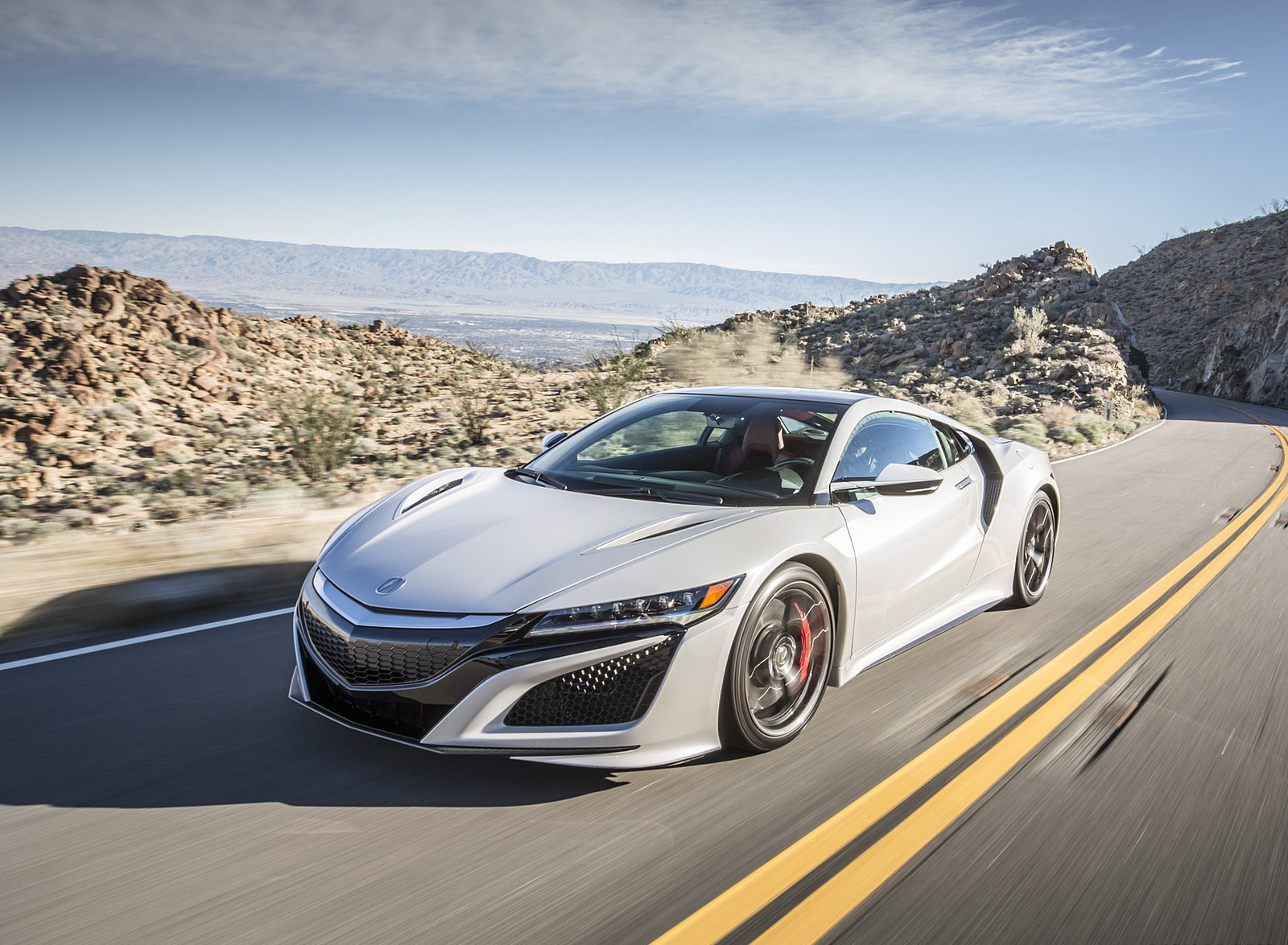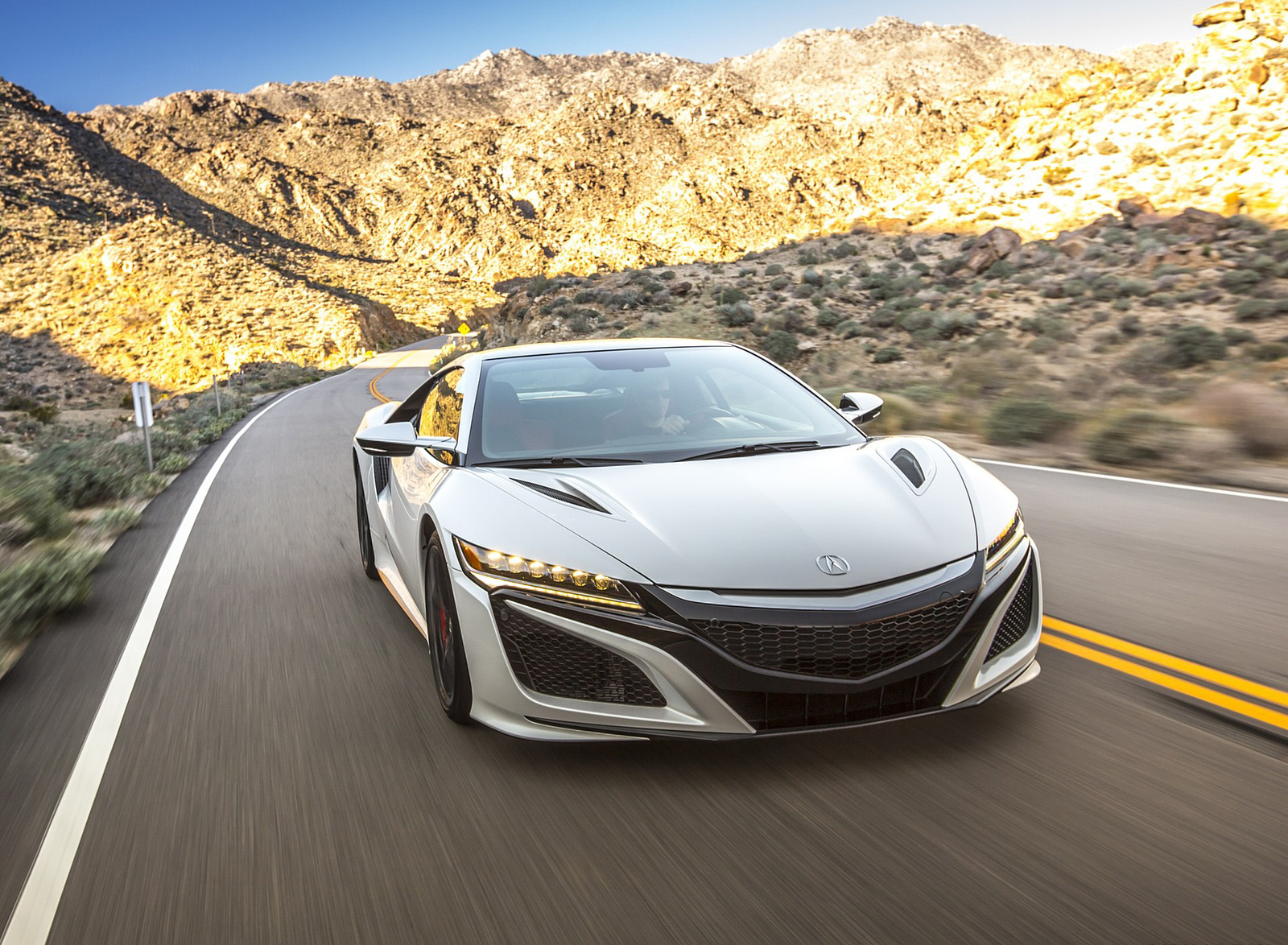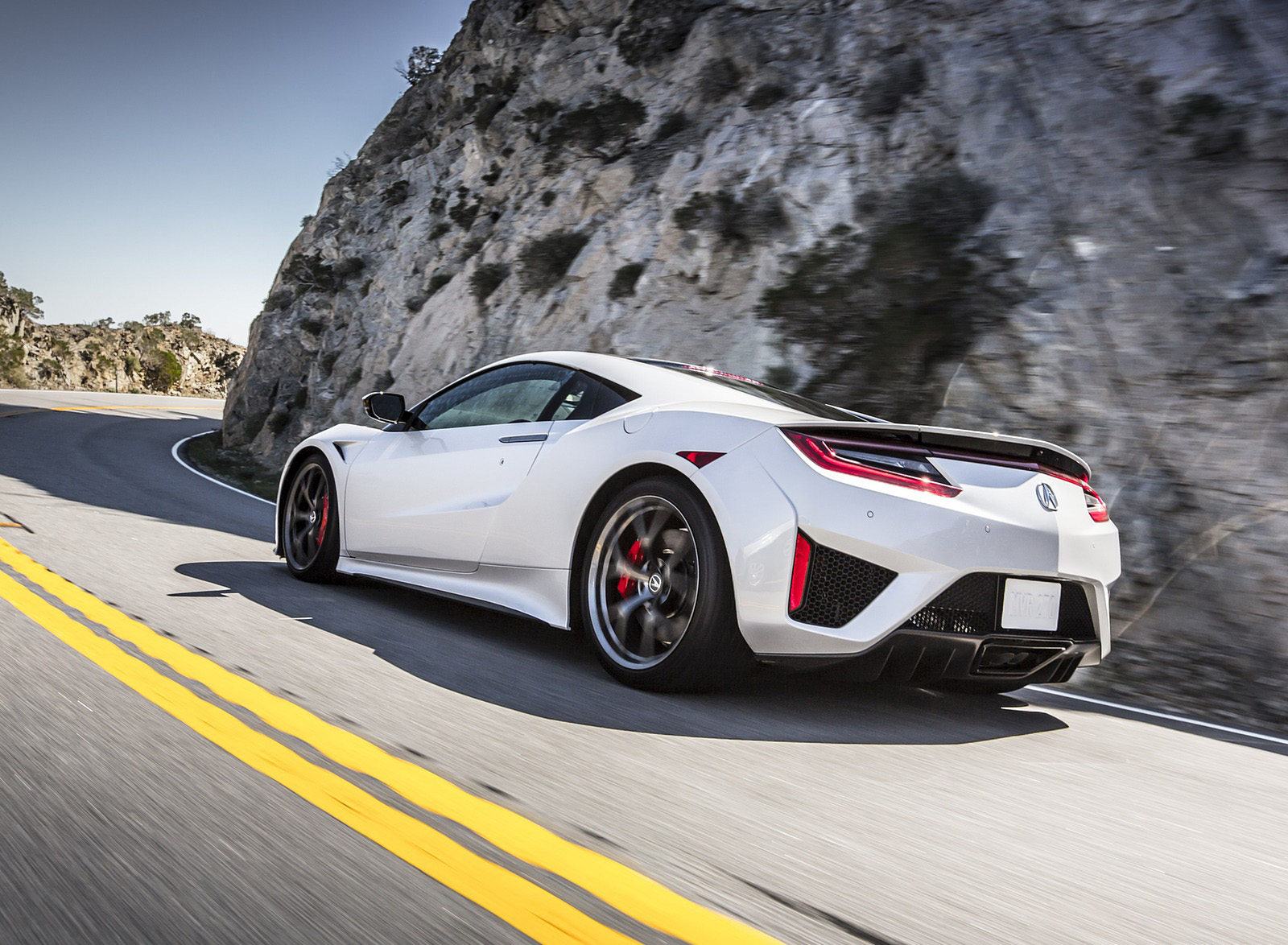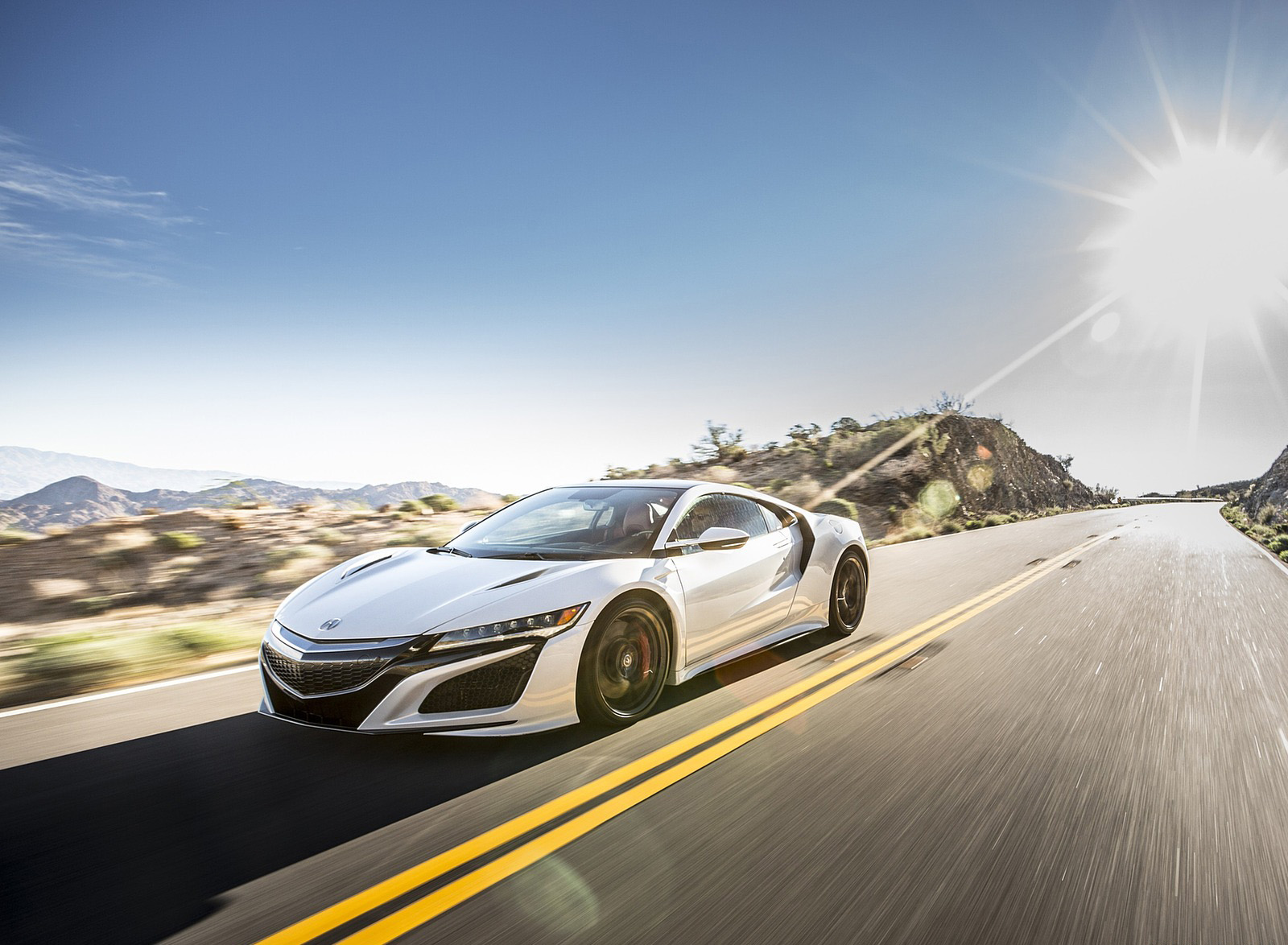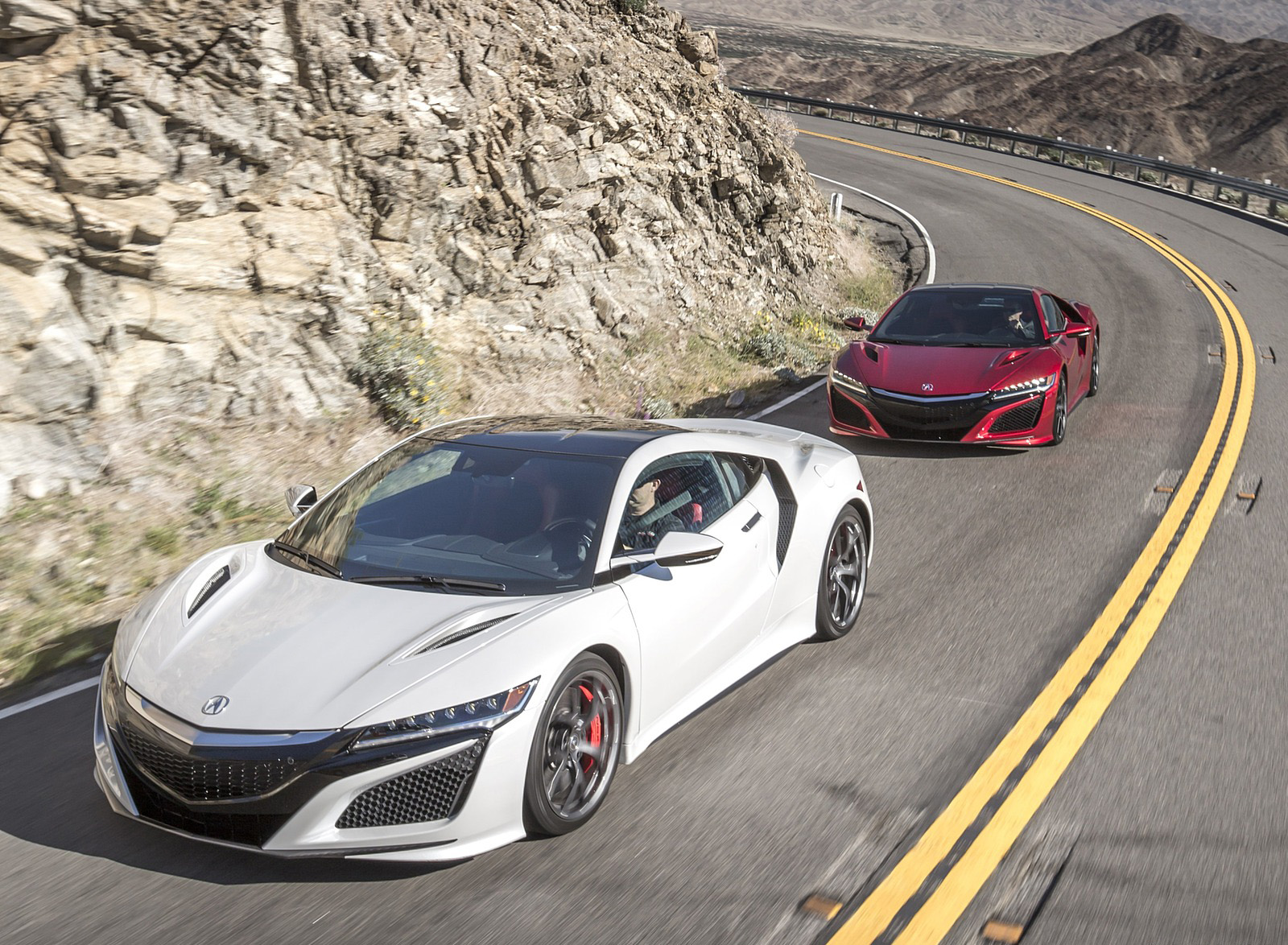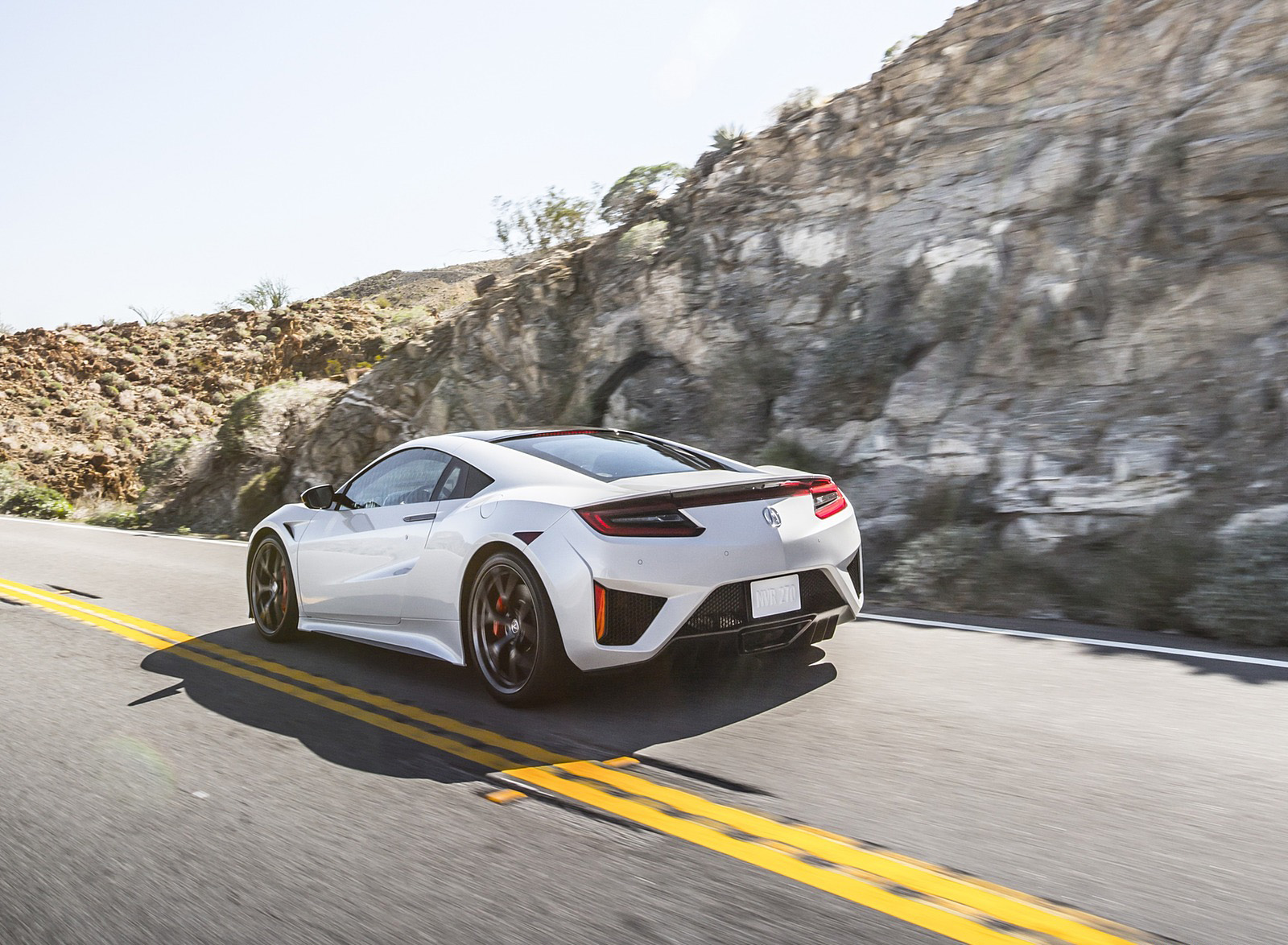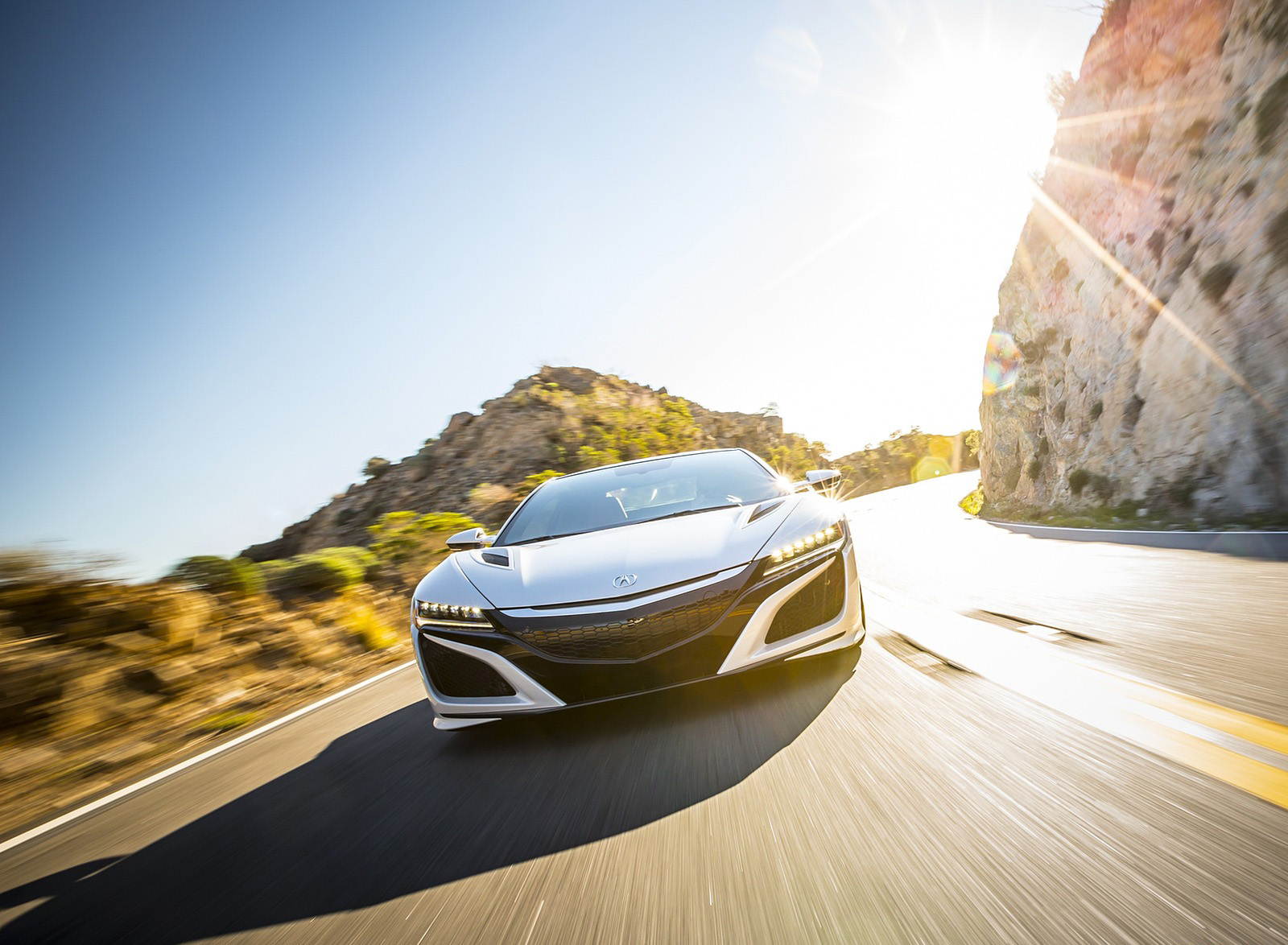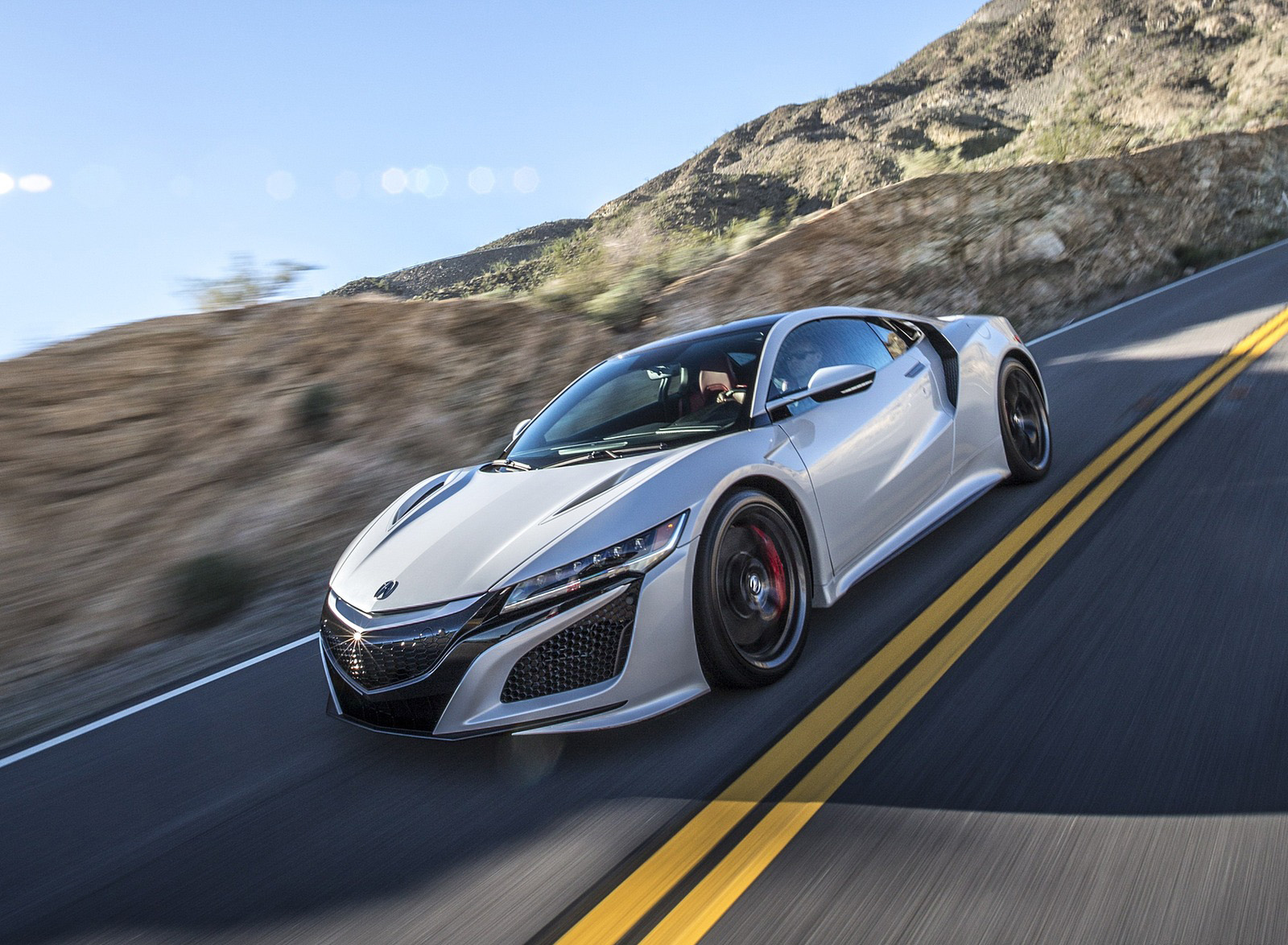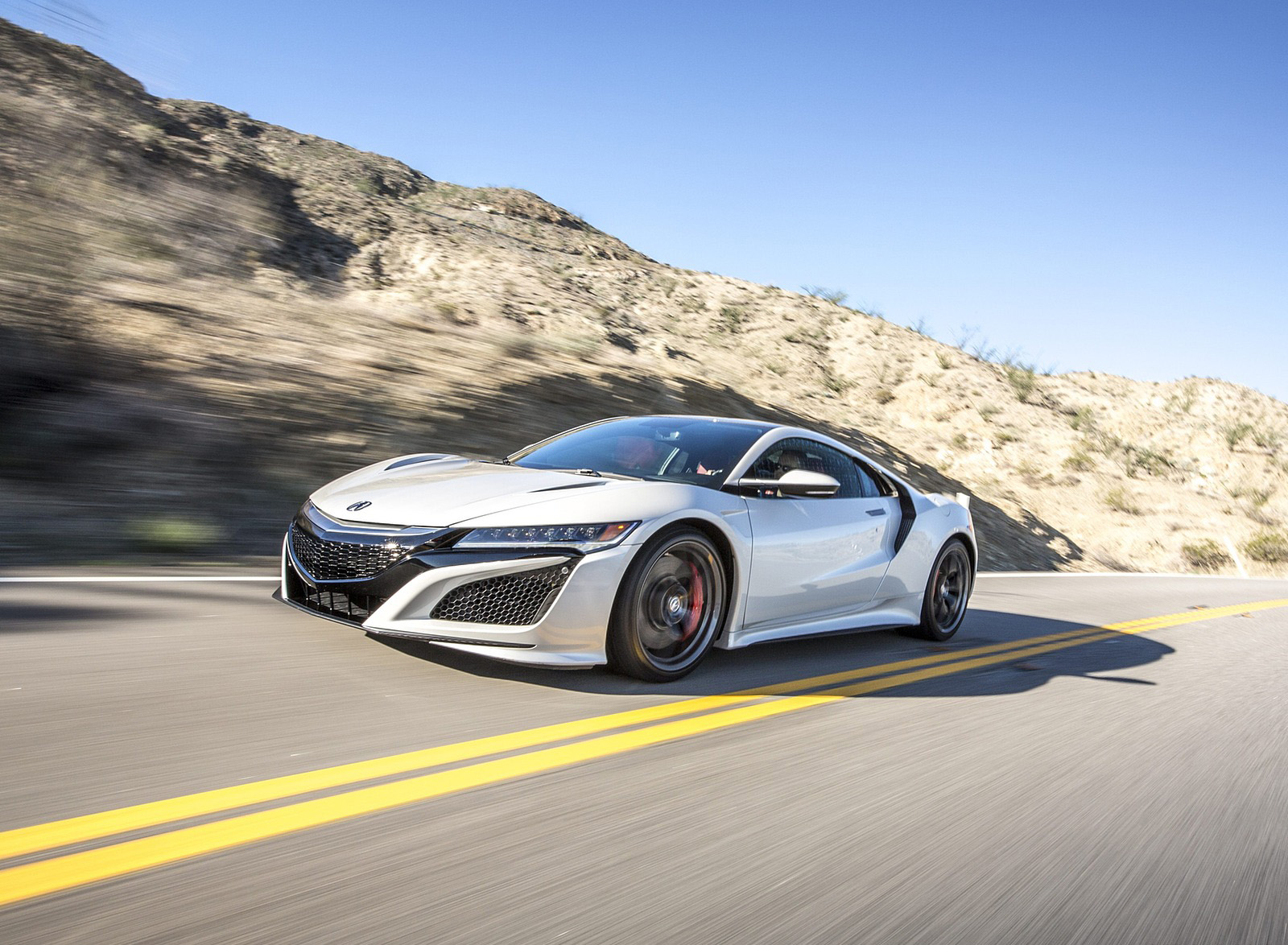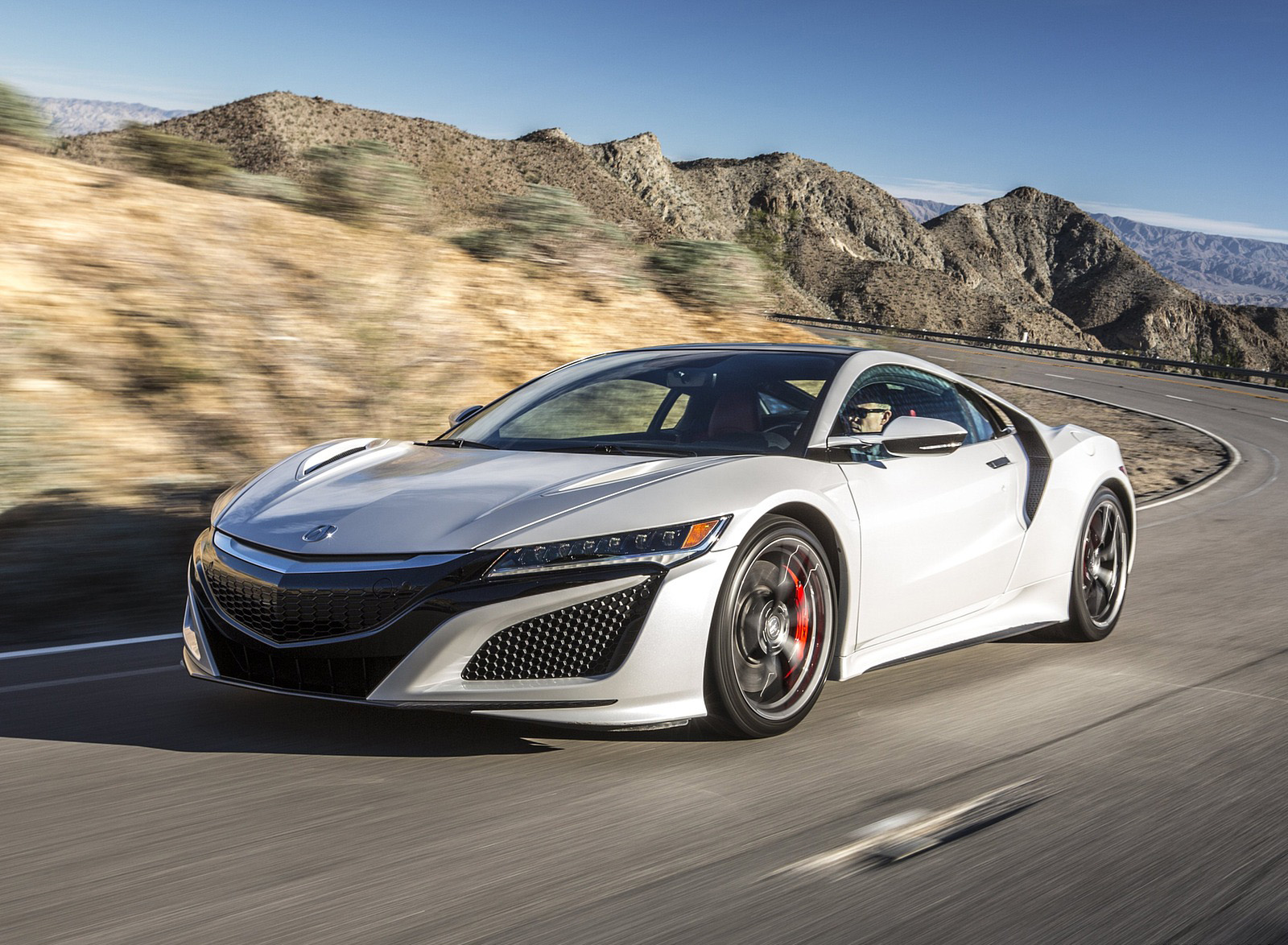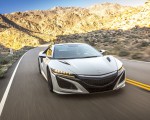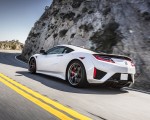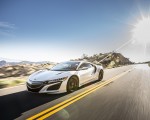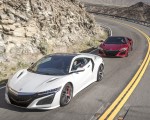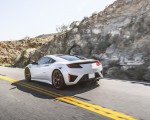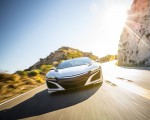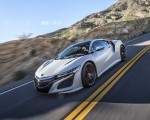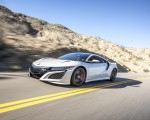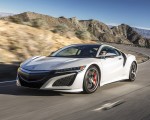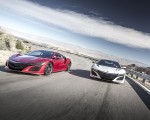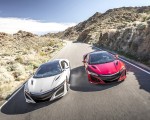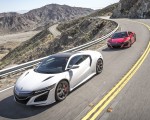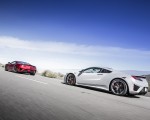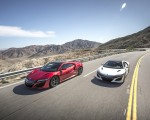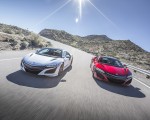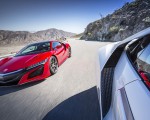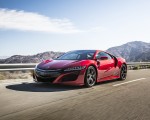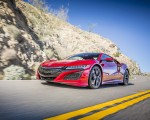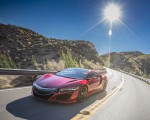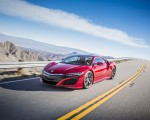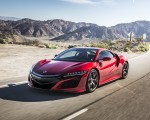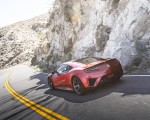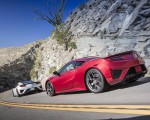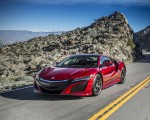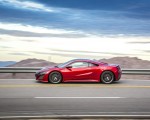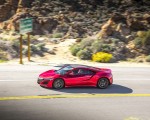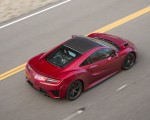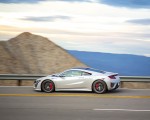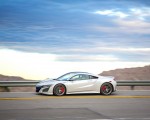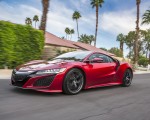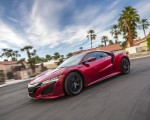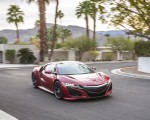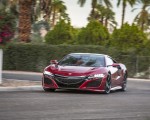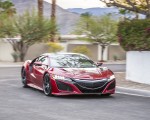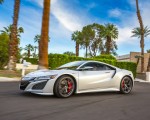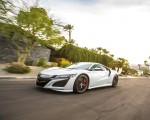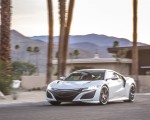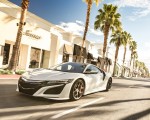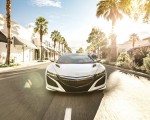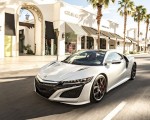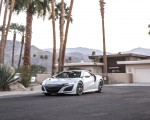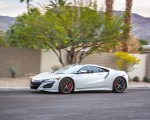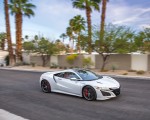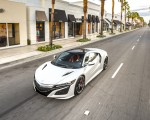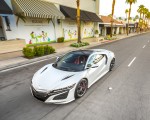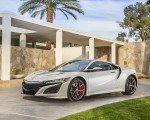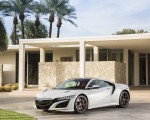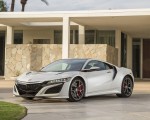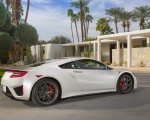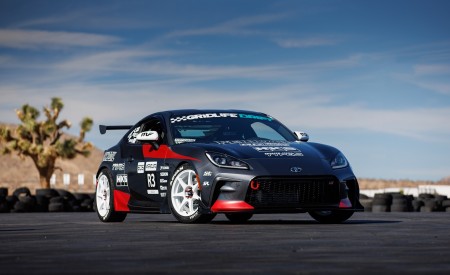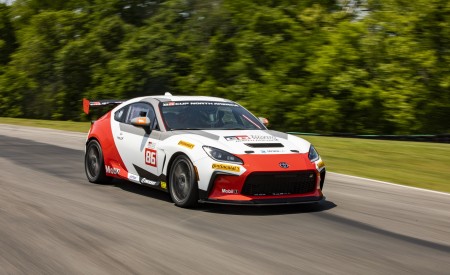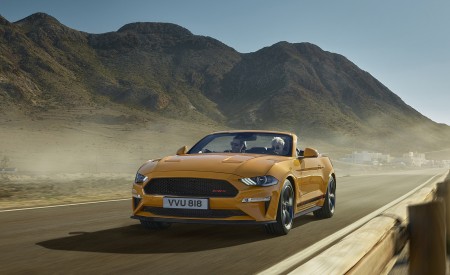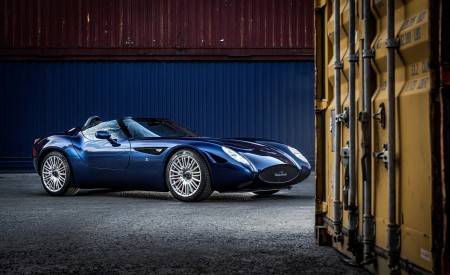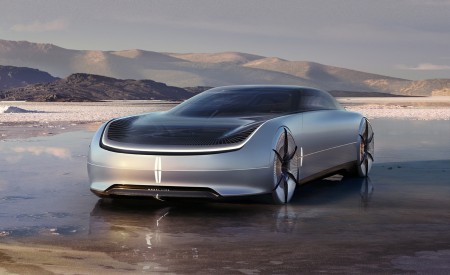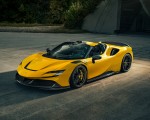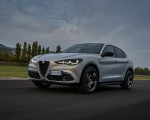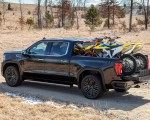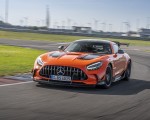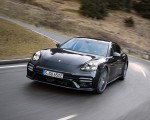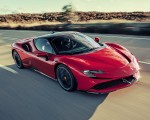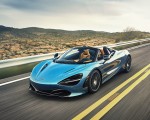2017 Acura NSX
A History of Innovation
When the original Acura NSX made its debut over 25 years ago, it forever changed sports car world by combining exotic car styling and performance with a new dimension of quality, exceptional ergonomics and dynamic poise. The NSX introduced and defined Acura’s approach to “Precision Crafted Performance” with its cutting edge design and innovative technology that provided accessible exotic car performance for real drivers in the real world.
By making use of advanced new technologies such as a lightweight yet rigid all-aluminum monocoque body/chassis mated to a mid-mounted transverse V-6 engine, the original NSX challenged conventional wisdom for an exotic car. Its high-revving V6 engine featured a number of innovative production-car technologies, including forged pistons, titanium connecting rods and VTEC valvetrain.
Moreover, the NSX sought a more intimate connection between the car, the driver and the road, pursued through essential design elements – low vehicle mass and high power-to-weight ratio, a rigid body supporting a performance-focused chassis, outstanding visibility, exceptional ergonomics, and accessible performance—creating a paradigm shift in what it meant to be an exotic car.
Importantly, the first generation NSX also exemplified Acura’s high standards of quality, durability and day-to-day reliability without compromising performance—something rarely found in exotic sports cars of the day.
Next-Generation Acura NSX Concept
Respecting these foundational concepts of the original NSX, the 2017 Acura NSX pursues an altogether new and revolutionary idea for Acura supercar performance, melding timeless sports car values with next-generation technologies to create a New Sports eXperience. And much like Acura’s Precision Crafted Performance DNA guided the creation of the original NSX, every aspect of this new NSX is a next-generation expression of those same values.
Based on the “man-machine synergy” approach that guides the development of all Acura vehicles, the company has created a driver-centered supercar where every part of the vehicle is respectful of the smartest part of the car—the driver.
Foremost among its many innovations is Sport Hybrid Super Handling All-Wheel-Drive (Sport Hybrid SH-AWD), a first-of-its-kind technology in the supercar realm. Marrying this cutting-edge and electrified new expression of Acura Super-Handling performance with new approaches to vehicle design—including advanced body construction, component packaging and aerodynamic optimization—results in a supercar that faithfully translates the acceleration, steering and braking inputs of the driver with incredible fidelity and virtually zero delay, thus amplifying the capabilities of every driver while greatly elevating the dynamic experience in every driving situation—qualities that define the New Sports eXperience.
Sport Hybrid SH-AWD utilizes its electric motors to assist acceleration, braking and cornering. With electrically-powered torque vectoring provided by the front-mounted Twin Motor Unit, the NSX takes Acura Super Handling All-Wheel Drive technology to a new dimension—using the dynamic, instantaneous and continuous distribution of electric motor torque to enhance handling precision and cornering performance in all driving situations.
The revolutionary NSX Sport Hybrid SH-AWD power unit and its advanced dynamic capabilities are supported by new concepts in supercar design and body construction. The NSX’s multi-material body/frame is a clean-sheet design, utilizing a multitude of materials and joining technologies, each chosen for its unique capability to deliver ultimate global and local body rigidity in combination with low mass, outstanding visibility and world-class occupant crash protection. The NSX’s multi-material body integrates several world-first technologies, including three-dimensionally bent and quenched ultra-high-strength steel A-pillars and ablation cast aluminum frame nodes.
Likewise, the design and packaging of the Sport Hybrid power unit’s components—engine, transmission, motors, batteries and control systems—is optimized to support and enhance its dynamic capabilities by lowering the center of gravity and centering the mass within the car.
GENERAL DIMENSIONS, CAPACITIES & WEIGHTS
| Wheelbase | 103.5 in. |
| Length | 176 in. |
| Height | 47.8 in. |
| Width | 87.3 in |
| Track (front/rear) | 65.2 in. / 63.7 in. |
| Fuel Tank Capacity | 15.6 gal |
| Curb Weight (without options) | 3,803 lbs. |
| Weight Distribution (front / rear without options) | 42% / 58% |
Sport Hybrid Super Handling-AWD Power Unit
The next-generation Sport Hybrid SH-AWD power unit consists of an all-new twin-turbocharged mid-mounted V6 engine paired with an all-new 9-speed dual clutch transmission (DCT) and Direct Drive Motor that supplements the engine with instant torque response. The Direct Drive Motor also operates as a generator, maintaining the state of charge of the hybrid batteries to consistently support driver demands.
These systems, which comprise the rear power unit, are supplemented by the revolutionary capabilities of the front-mounted Twin Motor Unit (TMU). Containing two electric motors that independently drive the left and right front wheels, the TMU provides “active AWD,” increasing forward acceleration and continuously varying torque—both positive and negative—supplied to the front wheels. The resulting “direct yaw control” effect enhances agility, stability, performance and response—it is true torque vectoring, available at any speed. Finally, the TMU also provides regenerative braking force, supporting braking demands while also recharging the hybrid battery.
By taking advantage of the immediate and precise torque response of the power unit’s three electric motors, the Sport Hybrid SH AWD system can elevate any driver’s confidence and performance while extracting more performance than could be obtained without it.
POWER UNIT SPECIFICATION OVERVIEW
| Sport Hybrid SH-AWD Power Unit | Front wheels: mechanically independent from rear power unit components, two electric motors (Twin Motor Unit); Rear wheels: Twin-turbocharged V-6 gasoline engine with one Direct Drive Motor and 9-speed DCT |
| Maximum Total System Power | 573 HP |
| Maximum Total System Torque | 476 lb.-ft. |
| ENGINE | |
| Type | Twin-turbocharged DOHC V6 |
| Layout | Longitudinally mid-mounted |
| Displacement | 3493 cc |
| Horsepower – SAE Net | 500 HP @ 6500-7500 rpm |
| Torque | 406 lb.-ft. @ 2000-6000 rpm |
| DIRECT DRIVE MOTOR | |
| Type | Water-cooled motor/generator |
| Layout | Direct drive motor attached directly to crankshaft |
| Horsepower @ rpm | 47 HP @ 3000 |
| Torque @ rpm) | 109 lb.-ft. @ 500-2000 |
| TRANSMISSION & REAR AXLE | |
| Type | 9-Speed Dual Clutch Transmission (9DCT) |
| Differential | Limited slip with wet multi-plate clutch |
| FRONT TWIN MOTOR UNIT (TMU) | |
| Type | Water-cooled motor/generator |
| Layout | Independent twin motors in a single package with a planetary gear set, one-way clutch and brake |
| Horsepower @ rpm | 36 + 36 HP @ 4000 |
| Torque @ rpm | 54 +54 lb.-ft. @ 0-2000 |
Multi-Material Body
Like the original Acura NSX—the world’s first all-aluminum exotic car—the all-new NSX has a cutting-edge structure. Its multi-material body utilizes new materials and construction methods to achieve unprecedented dynamic rigidity, outstanding outward visibility, and world-class collision performance. Making use of a space-frame design, the new NSX is composed primarily of lightweight aluminum, with the strategic use of steel and carbon fiber in select areas.
- Unmatched dynamic torsional rigidity – The NSX directly responds to the driver’s cornering demands, instantly transmitting those inputs to the chassis while maintaining perfect connection between front and rear axles, communicating both the driver’s action and any changes in the road surface with the utmost fidelity.
- Ultra-high local chassis rigidity – Each chassis component is mounted to a rigid casting supported by extruded aluminum frame members that act like “truss structures” such that high local attachment-area stiffness is ensured in all directions—thus maintaining the precisely-designed chassis geometry at all times.
- World’s first automotive application of ablation casting technology – Used both at front and rear, these ablation cast aluminum frame nodes service as ultra-rigid mounting points for the suspension. Applied in key crash zones, these nodes link frame sections together and uniquely deform in a manner similar to a forged component but with lower weight, enabling shorter front and rear overhang, reduced vehicle mass and superior collision performance.
- A-pillars: Super strong, yet slender – In another world’s first, a new three-dimensional bent and quenched frame member was employed to create thin yet sturdy A-pillars. The resulting ultra-high strength material allows a slender cross section to maximize forward visibility while meeting structural demands, including roof-crush requirements.
Other advanced construction and manufacturing techniques employed in the all-new Acura NSX include the world’s first use of all-robotic MIG welding of the space frame for uniform and precise joining of its aluminum components.
As with the space frame, NSX designers utilized a multitude of lightweight materials for the exterior body that are ideal for the task. Sheet hydro-formed aluminum is used for the outer door panels; aluminum stampings are used for the hood and roof (a carbon fiber roof is optional); sheet molding compound (SMC) is used for the fenders and trunk lid; and a high-temperature-resistant ABS plastic is used near the engine. This optimized material strategy is key to achieving desired panel rigidity with low weight, pedestrian safety performance, desired aesthetic design and exceptional surface finish.
BODY / FRAME
| Body/Frame Construction | Multi-material space frame with cast aluminum nodes, and a mix of light aluminum and low-density SMC outer panels |
| Ablation Cast Aluminum Nodes | Complex high performance aluminum castings for crush zones; World’s first automotive application |
| A-Pillar Structure | 3-D Bent and Quenched ultra high-strength steel (1500 MPa); World’s first application |
| Front Floor Panel | Carbon fiber |
NSX Chassis
The next-generation NSX chassis combines best-practice fundamental sports car design with advanced new technologies to elevate and enhance the NSX driving experience. Mounted directly (without subframes) to the ultra-rigid space frame, the NSX’s all-aluminum front and rear suspension systems—augmented by third-generation active magnetorheological (MR) dampers and a rigidly-mounted dual-pinion variable-ratio electric power steering (EPS) system—elevate the NSX’s dynamics performance while supporting the breakthrough capabilities of its Sport Hybrid SH-AWD system.
Front double ball joint suspension eliminates torque vectoring steering disturbances. The rigidly mounted EPS provides high fidelity steering feedback. The rear suspension’s high lateral rigidity is key to minimizing lateral acceleration response delay, and maintaining proper response phasing of the rear axle with respect to the front, to achieve stable cornering beyond 180 mph.
Deceleration capability is also enhanced with a next-generation electro-mechanical super sports braking system that combines the effectiveness of a high-performance mechanical (friction) braking system with a seamlessly integrated regenerative braking system. This next-generation “super sports brake” concept delivers class-leading braking performance virtually fade free, while recovering what would otherwise be wasted energy to help keep the hybrid battery charged and ready to support other dynamics demands.
Another important element of the chassis design includes the power unit mounting system, which utilizes a rigid aluminum subframe and the ultra-rigid space frame to firmly anchor the power unit; strategically-located mounts minimize engine and transmission movement (pitch and roll) within the body/frame.
CHASSIS SPECIFICATIONS
| Front Suspension Type | Double-wishbone, double lower control arm; aluminum |
| Rear Suspension Type | Multi-link; aluminum |
| Dampers | Active Gen III magnetorheological coilovers |
| Brakes | Vented disc with Brembo aluminum mono block calipers and iron rotors; optional carbon ceramic rotors |
| Steering Type | Variable ratio rack & pinion; Dual-pinion EPS |
| Steering Wheel Turns, Lock-to-Lock | 1.91 |
| Steering Ratio | Variable progressive; Range: 12.9:1 (on center) to 11.07:1 |
| Front Wheels | 19×8.5J forged aluminum |
| Front Tires | 245/35ZR19 93Y high performance summer tires; optional ultimate handling performance tires |
| Rear Wheels | 20x11J forged aluminum |
| Rear Tires | 305/30ZR20 103Y high performance summer tires; optional ultimate handling performance tires |
Advanced Sports Package
The new Acura NSX‘s “advanced sports package” is a design philosophy that seeks to optimize the packaging and layout of major vehicle systems—including the Sport Hybrid power unit (engine, Direct Drive Motor and 9DCT) and key hybrid components such as the Intelligent Power Unit (containing the lithium-ion battery pack)—to lower the CG, centralize the mass of the vehicle, and achieve desired weight distribution for optimal handling.
- The design of the bespoke all-aluminum twin-turbocharged V6 engine, including its 75 degree cylinder bank angle, dry sump lubrication system and compact valvetrain, is optimized for a low center of gravity and overall compact design.
- Likewise, the purpose-built 9DCT utilizes a new design, with the clutch and the differential situated side-by-side in a common housing, and a parallel shaft gear set arrangement—both of which help reduce the length of the powertrain.
- The Intelligent Power Unit, located in front the rear bulkhead, contains a new, compact lithium-ion battery pack with high power and energy density, and featuring a new “caseless” design for reduced mass. The twin fuel tanks are mounted behind the rear bulkhead, in front of the engine.
- The hybrid system’s Power Control Unit (PDU) uses a compact “three-in-one” design (converting direct current to alternating current to supply all three electric motors) allowing it to be packaged neatly in the vehicle’s center tunnel.
- Vehicle design also prioritizes small overhangs for a small footprint, helped by the aforementioned ablation cast nodes, while preserving comfortable cockpit headroom for 95th percentile male drivers.
Aerodynamics: “Total Airflow Management”
The NSX’s design and development team utilized a “total airflow management” approach to give the NSX the superlative aerodynamics one expects of a next-generation supercar, while simultaneously providing the effective and efficient thermal management required for its hybrid power unit. Six different heat sources must be managed: The twin-turbo engine, the 9-speed DCT, the PDU, and the three electric drive motors. To provide efficient cooling, airflow is managed through 10 heat exchangers situated to efficiently use airflow through the front grill area, side air intakes, and through the engine compartment.
The NSX effectively manages air flowing through the front motor room and rear engine room as well as around the body, while still maintaining the increased stability of properly distributed downforce. In fact, stability at speed is a hallmark of the new NSX, with unprecedented balance and confidence to enhance the driving experience.
Through extensive research and development, the NSX aerodynamics team determined that a 3-to-1 downforce ratio—placing three times as much downforce at the rear of the vehicle relative to the front of the car—would provide the optimal downforce distribution for high-performance driving.
Through the extensive use of computational fluid dynamic (CFD) simulations as well as testing of 40-percent scale model testing in the company’s advanced wind tunnel facility in Ohio, the team fine-tuned the various body shapes, intake and exhaust vents and vehicle strakes to reduce aerodynamic drag, create downforce, maximize cooling and efficiently exhaust unwanted heat.
The innovative aerodynamic developments were continuously verified at the company’s full-scale, moving ground plane wind tunnel in Sakura, Japan.
NSX Cockpit
From the intuitive instrumentation and simple control layout to the careful application of materials and padding in the sports seats, steering wheel and center console, the NSX provides exceptional, driver-centric ergonomics that supports and clarifies the driving experience.
To develop an interior with exemplary ergonomics, the Acura design team utilized a number of test drivers with wide-ranging driving experience and skill sets to gather information to improve all aspects of driver feedback and support in the NSX.
Attractive as well as structurally rigid and lightweight, the seats in the new NSX are designed to offer superlative comfort and support, with the lateral and fore/aft support needed for a supercar. Developed through extensive testing and pressure mapping measurements, these seats offer more comfort than those in competing high-performance vehicles while providing the torso and thigh bolstering needed in a high-limit vehicle such as the NSX. Seat materials such as leather and Alcantara were carefully selected for the perfect combination of dynamic driving support and comfort, including ease of ingress-egress.
Likewise, the center console/controls have been designed to minimize distractions from the most important function—driving—ultimately serving as a “simple sports interface.”
Integrated Dynamics System
The unique nature of the NSX’s Sport Hybrid power unit enables a higher degree of flexibility to customize the driving experience and dynamic performance to suit the needs and desires of the driver and the driving environment. This capability is provided by the Integrated Dynamics System, controlled by the Dynamic Mode dial on the NSX’s center console.
The NSX Integrated Dynamics System features four selectable dynamic modes – Quiet, Sport, Sport+ and Track – integrating all of the vehicle’s dynamic systems: steering, brakes, throttle, Vehicle Stability Assist, dampers and Sport Hybrid SH-AWD control systems, as well as providing a customizable auditory experience via new Intake Sound Control and Active Exhaust Valve technologies. (See Dynamics and Performance Management for additional detail).
Design, Development and Manufacturing
Design and development of the next-generation NSX involved a global team of engineers and designers. Design and development work on the Sport Hybrid power unit was centered in Tochigi, Japan, while design and development of the body, chassis, electrical and interior, along with total vehicle integration was concentrated in Raymond, Ohio. Initial design for the NSX was conducted at the company’s Wako, Japan design studio and was fully evolved and matured for production by the Acura Design Studio in Los Angeles.
Throughout its roughly four-year development, the fundamental concepts for a New Sports eXperience remained clear and consistent. However, the technologies and means by which the R&D team would realize their concept underwent a process of continual improvement and evolution, most notably in the area of engine design. Whereas the original direction called for a transverse-mounted, normally aspirated V6, the NSX development concept evolved to a new and more challenging approach—an all-new bespoke twin-turbocharged, longitudinally-mounted V6 engine. This radical re-imagination of the engine design had profound implications for every element of the NSX design, especially the package, cooling systems and aerodynamics.
The NSX has been tested and tuned on streets and race circuits around the world. In addition to the Transportation Research Center in Ohio and on-road testing, primary development tracks were Virginia International Raceway, the famed Nürburgring in Germany and at Honda’s own Takasu test circuit in Hokkaido, Japan.
The NSX is manufactured at the new Performance Manufacturing Center (PMC) in Marysville, Ohio using domestic and globally-sourced parts. The PMC was designed to innovate new means and methods of producing low-volume specialty cars and to realize challenging new ideas for next-generation craftsmanship and quality established by the NSX manufacturing team. The Performance Manufacturing Center employs approximately 100 associates, including 70 highly skilled manufacturing technicians engaged in body construction, painting, assembly and quality confirmation of the NSX. Among its many innovative processes is the world’s first use of all-robotic MIG welding for the construction of the NSX’s aluminum space frame.
The NSX’s bespoke twin-turbocharged V6 engine is meticulously hand assembled by expert technicians at the company’s engine plant in Anna, Ohio, using techniques and processes benchmarked against the company’s world-class race engineering programs. Each engine is bench tested and broken in to the equivalent of 150 miles of service. The NSX’s 9-speed dual clutch transmission, Direct Drive Motor and engine are machine balanced and assembled at the Anna Engine Plant. The Twin Motor Unit (TMU) and other hybrid system components are built in Japan and sent directly to the Performance Manufacturing Center for fitment in the NSX.
